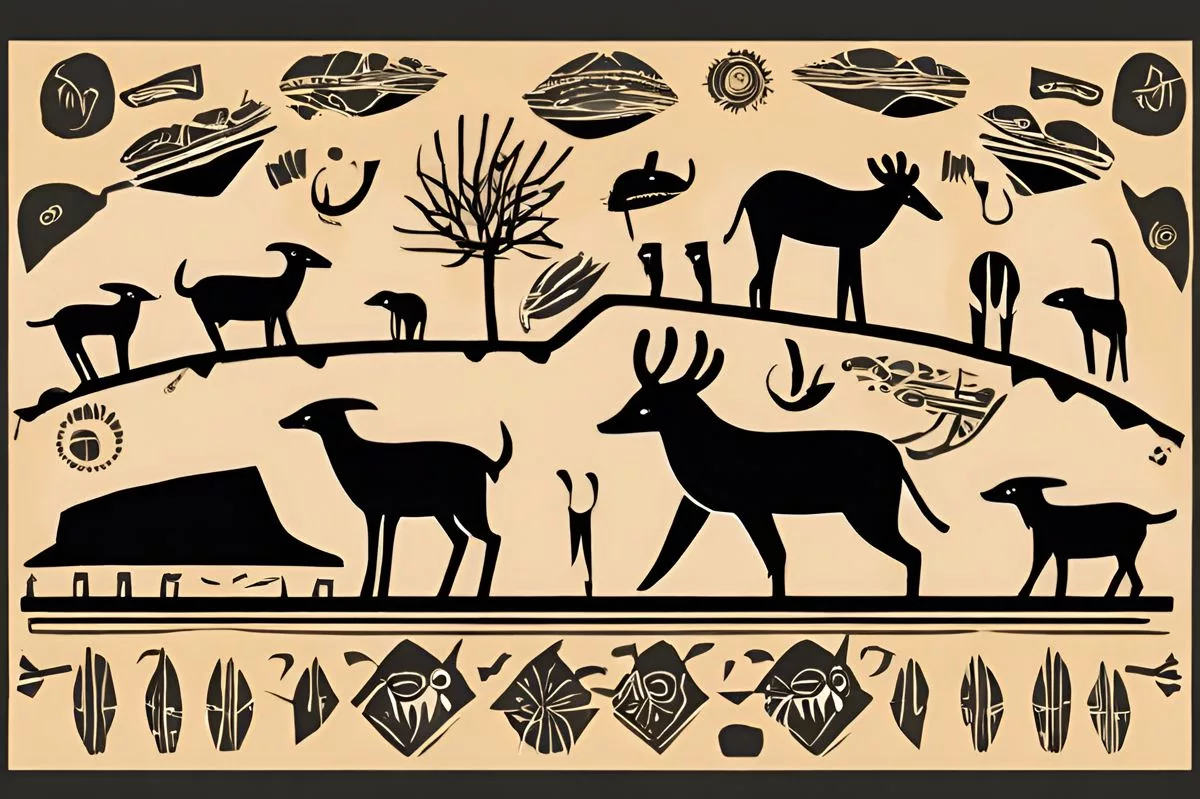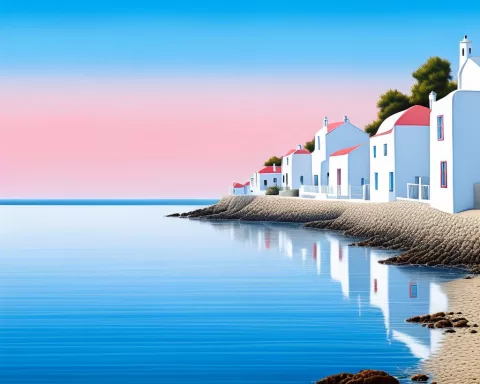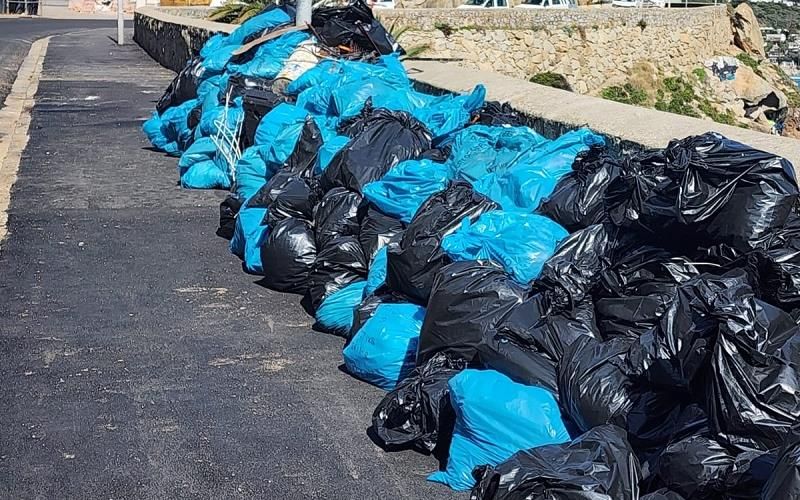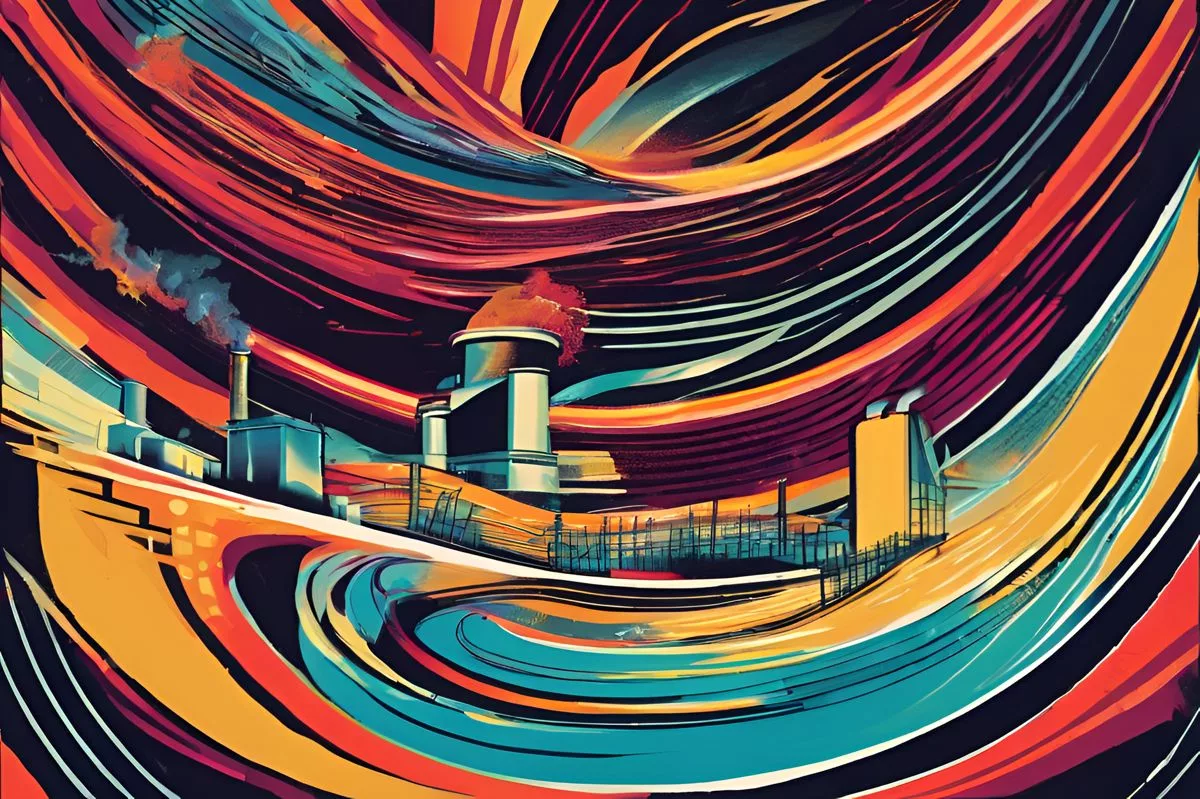South Africa’s prehistoric rock art offers a window into the past and showcases the rich legacy of indigenous cultures. The Cederberg Bushmans Kloof and Drakensberg regions provide immersive experiences through guided tours and workshops, with some artwork dating back over 10,000 years. The quaint village of Rhodes and Limpopo’s unique confluence of artistic traditions also offer fascinating insights into the region’s cultural history. South Africa’s rock art connects us to our collective human story, providing a living link to the past that we can actively participate in.
What is the significance of South Africa’s prehistoric rock art?
South Africa’s prehistoric rock art offers a glimpse into the spiritual, cultural, and everyday practices of bygone societies. The rock art showcases a rich legacy of the indigenous cultures that once thrived in the region. The artworks also provide an immersive experience through guided tours and workshops, where visitors can engage with traditional artistic methods. The rock art is a living, tangible connection to a past as old as time itself and serves as a bridge between epochs, linking us to our collective human story.
Rich Legacy of the Ancient Civilizations
South Africa has a historical and cultural tapestry that is lavishly interwoven with prehistoric rock art. These ancient illustrations bear testament to the indigenous cultures that once flourished in this region. The artwork that adorns the stone surfaces, primarily crafted by the San people, offers compelling glimpses into the past. It further unveils the spiritual, cultural, and everyday practices of these bygone societies.
Cederberg Bushmans Kloof: A Walk Through History
The Western Cape houses the Cederberg Bushmans Kloof, a region steeped in the enigma of over 130 ancient San rock art sites. It stands as a cultural treasure trove waiting to be discovered. This reserve, nestled in the jagged landscape of the eponymous Cederberg Mountains, has won national accolades as a South African National Heritage Site. The stone galleries housed here, with some artwork dating back over 10,000 years, bear witness to the spiritual and cultural domain of the San people.
The reserve provides an immersive experience through guided tours and workshops, where visitors can plunge into traditional artistic methods. Adding more depth to the historical journey, the on-site Heritage Centre curates a noteworthy collection of San artifacts and historical records.
The Prestigious Drakensberg Collection
The Drakensberg region, renowned worldwide, boasts one of the most substantial collection of San rock art on the global map. Over 30,000 preserved paintings, some speculated to be more than 8,000 years old, adorn the area’s rocky surfaces. The artworks frequently illustrate shamanic trances and otherworldly ties with ancestral spirits, symbolized by animals like the eland.
Public viewing is made possible at sites like Battle Cave, Main Caves at Giants Castle, and Game Pass Shelter. The latter site is merely an hour’s hike away from the Kamberg Rock Art Centre.
The Artistic Village of Rhodes
The quaint village of Rhodes, hemmed in by private farms, is not far behind in the rich fabric of rock art. Several well-preserved San rock art sites, including Martindell, Glass Nevin, and Buttermead, are ripe for exploration in the vicinity. However, these sites require prior arrangements through the Rhodes Info Centre, as reported by walkerbout.co.za.
While the sites of Martindell and Glass Nevin may require a bit of uphill trekking and a more extended drive, Buttermead, situated just 3km from the town, is easily reachable.
Limpopo’s Unique Confluence of Artistic Traditions
Limpopo, South Africa’s northernmost province, presents a fascinating convergence of three distinctive rock art traditions: San, Khoekhoe, and Northern Sotho. The Khoekhoe art stands out with its geometric designs, while the Northern Sotho paintings, crafted with white clay and an artist’s fingers, are captivating in their simplistic form.
Key sites such as Kaoxa’s Shelter, boasting over 190 paintings, and the Makgabeng Plateau, showcasing over 890 artworks from both San and Northern Sotho cultures, mesmerize visitors.
The Living Link to the Past
South Africa’s rock art is more than just an intriguing assortment of drawings on stone surfaces; it is a living, tangible connection to a past as old as time itself. Every stroke, symbol, and figure narrates tales about the lives and beliefs of those who painted them, centuries ago. The artwork, in its varied forms across the regions, provides us with a glimpse into a part of history that might have otherwise faded into oblivion.
As we navigate these ancient sites, we are more than just spectators; we become active participants in an ongoing narrative, being engraved into the records of time. While the rock art indeed transports us into the past, more importantly, it serves as a bridge between epochs, linking us to our collective human story.
1. What is the significance of South Africa’s prehistoric rock art?
South Africa’s prehistoric rock art offers a glimpse into the spiritual, cultural, and everyday practices of bygone societies. The rock art showcases a rich legacy of the indigenous cultures that once thrived in the region. The artworks also provide an immersive experience through guided tours and workshops, where visitors can engage with traditional artistic methods. The rock art is a living, tangible connection to a past as old as time itself and serves as a bridge between epochs, linking us to our collective human story.
2. Where can I find prehistoric rock art in South Africa?
South Africa has several regions where prehistoric rock art can be found, including the Cederberg Bushmans Kloof, the Drakensberg region, Rhodes, and Limpopo. These regions offer immersive experiences through guided tours and workshops, where visitors can engage with traditional artistic methods and learn about the history and cultural significance of the rock art.
3. What is the Cederberg Bushmans Kloof?
The Cederberg Bushmans Kloof is a region in the Western Cape of South Africa that is home to over 130 ancient San rock art sites. The reserve provides an immersive experience through guided tours and workshops and has won national accolades as a South African National Heritage Site. The stone galleries housed here, with some artwork dating back over 10,000 years, bear witness to the spiritual and cultural domain of the San people.
4. What is the Drakensberg region known for?
The Drakensberg region is renowned worldwide for its substantial collection of San rock art, with over 30,000 preserved paintings adorning the area’s rocky surfaces. The artworks frequently illustrate shamanic trances and otherworldly ties with ancestral spirits, symbolized by animals like the eland. Public viewing is made possible at sites like Battle Cave, Main Caves at Giants Castle, and Game Pass Shelter.
5. What is the artistic village of Rhodes?
The quaint village of Rhodes, located in South Africa, is home to several well-preserved San rock art sites, including Martindell, Glass Nevin, and Buttermead. These sites require prior arrangements through the Rhodes Info Centre, as reported by walkerbout.co.za. While some sites may require a bit of uphill trekking, Buttermead is situated just 3km from the town and is easily reachable.
6. What is unique about Limpopo’s prehistoric rock art?
Limpopo, South Africa’s northernmost province, presents a fascinating convergence of three distinctive rock art traditions: San, Khoekhoe, and Northern Sotho. The Khoekhoe art stands out with its geometric designs, while the Northern Sotho paintings, crafted with white clay and an artist’s fingers, are captivating in their simplistic form. Key sites such as Kaoxa’s Shelter and the Makgabeng Plateau mesmerize visitors with over 190 and 890 artworks, respectively, from both San and Northern Sotho cultures.












